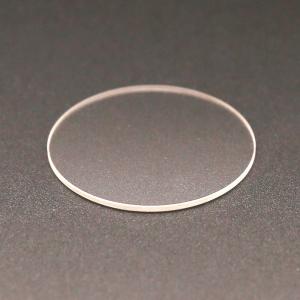

Add to Cart
CaF2 is commonly used for applications requiring high transmission
in the infrared and ultraviolet spectral ranges. Its extremely
high laser damage threshold allows it to be used with excimer
lasers. The material exhibits a low refractive index, varying from
1.35 to 1.51 within its usage range of 180 nm to 8.0 μm. Calcium
fluoride is also fairly chemically inert and offers superior
hardness compared to its barium fluoride, magnesium fluoride, and
lithium fluoride cousins. Calcium Fluoride has widespread IR application as windows, prisms
and other lenses.
| Material | Calcium Fluoride |
| Diameter Tolerance | +0.0/-0.1 mm |
| Thickness Tolerance | ±0.1 mm |
| Parallelism | 1 arc min |
| Surface Quality | 60-40 Scratch-Dig |
| Surface Flatness (Plano Side) | λ/2 at 633nm |
| Surface Irregularity (Peak to Valley) | λ/2 at 633nm |
| Clear Aperture | 90% |
| Chemical Formula | CaF2 |
| Crystal Class | Cubic, cleaves [111] plane |
| Lattice Constant, Å | 5.46 |
| Density, g/cm3 (20 °C) | 3.18 |
| Molecular Weight | 78.08 |
| Reflection Loss | 5.4% at 5 μm |
| Absorption Coefficient | 7.8 x 10-4 cm-1 @ 2.7 μm |
| Dielectric Constant for 105 Hz | 6.76 |
| Melting Temperature, K | 1630 |
| Thermal Conductivity, W/(m K) at 273 K | 10 |
| Thermal Expansion, 1/K at 300 K | 18.9 x 10-6 |
| Specific Heat, cal/(g K) at 273 K | 0.204 |
| Debye Temperature, K | 510 |
| Young's Modulus, GPa | 75.79 |
| Rupture Modulus, GPa | 0.0365 |
| Shear Modulus, GPa | 33.76 |
| Bulk Modulus, GPa | 83.03 |
| Poisson's Ratio | 0.28 |
| Knoop Hardness, kg/mm2 | 178 [100], 160 [110] |
Production process
